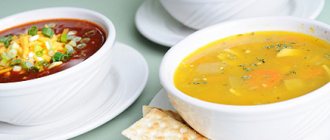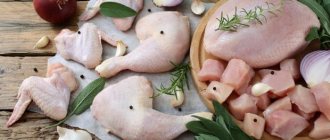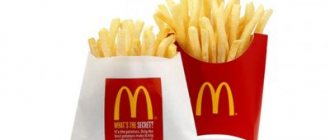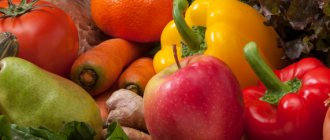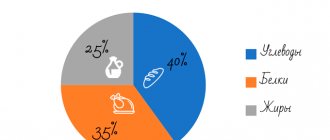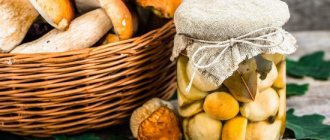Surely many people have their own favorite dishes, however, recipes rarely indicate the calorie content of the final product. And when compiling original recipes, this option is completely absent. How to improve your skills in calculating ready-made meals and preparing them for several meals in accordance with daily needs? Let's figure it out.
Often, having set foot on the path of proper nutrition and calorie counting, the menu for beginners includes cucumbers, boiled chicken fillet, buckwheat and similar simple products, because it is quite difficult to calculate the number of calories and nutrients per 100 grams of a complex dish. This is where myths about the monotony and complexity of the diet are born. In fact, only at first glance the process seems impossible. In this article you will learn:
- why it is necessary to count the calorie content of foods and how to do it;
- basic algorithms for calculating the energy value of a future dish;
- auxiliary services and specific calculation examples.
How to calculate calories in foods
At first it may seem that the counting procedure is very time-consuming and tedious. But very soon this will become a habit and will become an integral procedure when creating a daily menu, just like training in the gym or at home.
To do this, you will need two main tools - kitchen scales, which are sold in any hardware store, and tables with calorie content of foods. However, this is not enough to achieve the goal.
To build a high-quality form, the composition of the food consumed is extremely important. You can get your entire calorie intake from sweets, but everyone understands perfectly well that the quality of the body will not be the best. In this regard, it is important for the body to receive all the necessary nutrients: proteins, fats and carbohydrates.
What is needed for counting
People are divided into two types:
- Those who count calories
— And those who don’t count calories.
#1 – You can’t do without a kitchen scale
It is very difficult to judge by eye the weight of, for example, two pieces of meat of approximately the same size. A lean piece will weigh more than a sinewy piece with a bone. The difference can be twofold.
Let's not deceive ourselves or try to guess the weight. The accuracy of the kitchen scale weighing method will be the best way to determine the weight of food.
If you don’t have kitchen scales, you can order them on wildberries, amazon, aliexpress, mvideo, eldorado and other online stores. Read reviews and buy the model you like. This will be a good investment in your own health.
#2 – Calorie counting apps will make your life easier
Of course, you can write everything down in a notebook or constantly look at calorie tables, but apps will make the process easier and more interesting. More on this below.
#3 - Patience
Patience will also come in handy at first. Don't be discouraged if you find it difficult at first or if the counting takes a long time. At first we don’t like any unfamiliar task, then we get involved and begin to find our own thrill in it.
All products change volume
Due to any heat treatment during the cooking process, the products will be fried or evaporated, releasing a certain part of the nutrients and calorie content into the water. As a result, meat, vegetables, cereals, etc. will change in volume, but the calorie content will remain the same:
- cereals, pasta - increase in volume due to moisture absorption;
- poultry, meat, fish - lose moisture, decreasing in volume;
- vegetables also lose moisture and become smaller in volume.
An example with a protein product: 200 g of chicken fillet contains 226 kcal, and after boiling, the result is 150 g of boiled meat, but its calorie content remains unchanged and is 226 kcal.
Example with complex carbohydrates: 100 g of buckwheat contains 329 kcal, boil it in 200 ml of water. The cereal absorbs liquid and increases in volume, but the calorie content remains the same - 329 kcal. By increasing the proportions of water, the volume of porridge will become even larger, but the calorie content will remain unchanged.
Therefore, any product must be weighed before cooking. As a last resort, you can calculate the percentage of the portion eaten. For example, out of 100 g of buckwheat porridge cooked in water, only a third of the finished dish was consumed. To calculate a portion, you need to divide the total calorie content by 3: 329 kcal: 3 = 109.7 kcal
In this case, there is no need to recalculate the finished dish, because you know the amount of energy consumed and remaining.
Why is it important to calculate the calorie content of prepared food?
On the packaging of any product you can find information about its calorie content. However, heat treatment changes the energy value of products. An illustrative example is an apple, 100 g of which in its raw form contains 47 Kcal, and when baked - 89 Kcal.
Considering that a person mainly eats not raw, but prepared foods, counting calories for weight loss on a calculator allows you to accurately find out the nutritional value of cooked food and correctly formulate a menu.
Calculation of calorie content of a complex dish
It is important to remember the inviolable rule in calculation: when adding water, the weight of the finished dish becomes greater, and there will be fewer calories per 100 grams. In the case when the final calculation has already been made and no further ingredients will be added in the future, then re-calculation is not required.
The main assistant will be the formula for calculating the calorie content per 100 g of cooked dish:
A gram = B calories 100 grams = X calories
Explanation of symbols:
- A (gram) – the final weight of the prepared dish;
- B (calories) – the total calorie content of all ingredients in the composition.
To detect the unknown (X), you need to multiply the numbers located diagonally by each other, and then divide by the number that goes diagonally with the unknown:
B * 100: A = calorie data per 100 g of finished dish
Calculation of the mass of the finished dish
Before preparing a dish, each component must be weighed and the results recorded.
Another important figure is the final mass of the finished dish. In this case, it will be 1,345 g, taking into account the fact that one egg of category C1 weighs approximately 55 g. Of course, you can weigh the finished dish only together with the bowl or pan in which it is located. Therefore, determine the mass of the container in advance and subtract this figure from the final one.
Weigh frequently used utensils and record the readings in a notebook. This will come in handy if you forget to find out the mass of an empty bowl.
Calorie counting using services
There are a number of popular services that can calculate the calorie content and KBJU of ready-made dishes for you. And, unfortunately, each counter has a drawback: the program does an excellent job of taking into account the final weight, calories and nutrients, but does not take into account the thermal methods of processing foods. As a result, the data will be less accurate than manual calculations.
One way or another, a special application or program does an excellent job of counting KBJU products and all recipe ingredients; you can download it for free for any phone system.
FatSecret
There is another way to quickly and easily calculate the amount of proteins, fats and carbohydrates in a finished dish - this is the FatSecret application. The program also tracks achievements and teaches you how to create a balanced diet. It is possible to enter missing products and record recipes.
The daily menu is very conveniently divided into several meals: breakfast, lunch, dinner and snacks. In the appropriate window, enter the data of the selected products:
The program does all the calculations for you, analyzing the number of calories and BJU not only in general, you will also see the amount of energy consumed for breakfast, lunch, dinner or snack. At the very bottom of the daily diet table you can see a summary diagram for the day, which is extremely convenient for building a nutrition plan for a specific goal, be it losing weight, gaining muscle mass, or maintaining weight.
Do not forget that the program calculates the calorie content of foods in a single quantity based on the approximate weight of the ingredient, but not the exact one. One cucumber can weigh 100 g or 150 g. Therefore, it is recommended to enter the data yourself after preliminary weighing.
Exactly the same principle must be followed when working with mobile applications, entering the amount of food in grams yourself.
Other mobile applications
Diary Nutrition is a free food diary with a simple interface. The main feature is the ability to specify the exact time of eating.
Lifesum – in the program you can specify a goal (losing weight or gaining muscle mass), after which the application can independently calculate the required amount of calories especially for you, and also recommend a diet in accordance with your tastes. There is a built-in water tracker and the ability to synchronize with other programs to track achievements. The program also evaluates your success using a special scale.
Yazio is a convenient calorie calculator that analyzes information about foods consumed and physical activity for the month, forming the data into a graph.
MyFitnessPal is a high-quality development that is popular all over the world. The database contains about 6 million products, which is updated daily. The program is considered the best calorie counter for Android.
How to find out the KBJU of a specific ingredient?
The answer is simple - on the Internet. There are many sources where you can simply print out the data for the products you frequently use and do the calculations manually. There are services that automatically calculate the calorie content of the amount of ingredient you took.
I consider the Calorizer to be the most convenient for me - calorizator.ru. This service has several analyzers that will show you data not only for one product, but also calculate the sum of the indicators of all the ingredients that you took for the dish. (This is not an advertisement!).
Two mistakes when calculating calories
- Error in calorizer data.
Very often in programs the amount of weight of the product according to the recipe is indicated in pieces, spoons, glasses, etc. Such indicators make the calculation of the calorie content of a dish approximate, since it is impossible to know exactly the exact number of calories due to the uneven weight or fat content of the products in the author’s recipe and in your interpretation. Therefore, it is better to ignore such information and enter only your own numbers in the program or nutrition diary.
- Taking a sample.
It is not recommended to test a dish for the amount of salt during the cooking process and, in principle, before the final weighing. Otherwise, it will simply not be possible to make an accurate calculation. You can also add salt to the dish in a separate plate.
Keep life easy
Please don't become obsessed with counting calories. It's just a way to control nutrition. If you can’t weigh something, buy the product already weighed and with information on the label about KZHBU. If you can’t count something, for example, at a barbecue picnic or a party with friends, eat by eye.
The main thing is not to create a cult of life out of calorie counting. Calorie counting needs to serve for a happy life and be conveniently integrated into your lifestyle.
Over time, you can stop counting calories, because you will become a mega-professional in assessing your diet and will be able to stay on the maintenance calorie level by eye)))
Examples of calculations
Basic principles on how to correctly count calories in complex dishes to lose weight, maintain weight, or gain muscle mass:
- all products are weighed in dry/wet form;
- We count the KBJU of each ingredient;
- The data obtained is added up - this will become the total calorie content of the recipe.
We suggest looking at the example of such a complex dish as oatmeal with milk, honey and butter .
Ingredients:
- oatmeal – 130 g;
- milk 3.2% - 50 ml;
- honey – 30 g;
- butter 82.5% – 10 g.
The process of calculating calories for a complex dish:
- We multiply the indicators per 100 grams by the required portion of the product.
- Let's sum up the KBJU ingredients.
| Ingredients/KBJU | Calories | Squirrels | Fats | Carbohydrates |
| Oat groats | 444,6 | 15,99 | 7,93 | 77,35 |
| Milk 3.2% | 29,5 | 1,45 | 1,6 | 2,35 |
| Honey | 98,7 | 0,24 | 0 | 24,45 |
| Butter 82.5% | 74,8 | 0,05 | 8,25 | 0,08 |
| TOTAL | 647,6 | 17,73 | 17,78 | 104,23 |
For the whole mess we get: K-647.6; B-17.73; F-17.78; U-104.23.
Simple dishes porridge
First of all, it is necessary to calculate the calorie content of a man’s daily diet, which will differ from a woman’s daily needs, and also to know how to select the right ingredients and learn to count calories so that the process of losing, gaining or maintaining weight is effective and without harm to health. Therefore, we continue to practice and learn to do calculations on simple dishes. This time it will be rice porridge .
Ingredients:
- rice – 300 g;
- water – 900 ml;
- salt - to taste.
Calculations:
- There are 330 calories per 100 g of raw rice.
- For the recipe you will need 300 g of cereal: 330 kcal * 3 = 990 kcal. This is the final calorie content of the dish, because... the remaining ingredients do not contain energy value.
- Let’s assume that after cooking the weight of the dish was 900 g. Now we calculate the calorie content of the product per 100 grams:
900 g of rice porridge = 990 kcal 100 g of rice porridge = ? kcal (990 * 100) / 900 = 110 kcal
Total : 100 g of ready-made rice porridge contains 110 calories.
This algorithm will be similar for the process of calculating any other cereals, pasta, legumes, etc. First, we weigh the dry product and make a calculation, then we cook it, drain the water and calculate the energy value per 100 grams.
Complex dishes: puree soup and apple mousse
And now the practice is more complex - puree pumpkin soup.
For clarity and your convenience, a table with summarized data is presented.
| Ingredients | Recipe ingredient weight | Calorie content per 100 g | Calorie weight of ingredient according to recipe |
| Milk 3.5% | 1 l (1000 ml) | 61 * 10 kcal | 610 kcal |
| Potato | 700 g | 80 * 7 kcal | 560 kcal |
| Pumpkin | 700 g | 25 * 7 kcal | 175 kcal |
| Onion | 150 g | 41 * 1.5 kcal | 61.5 kcal |
| Carrot | 100 g | 37 * 1 kcal | 37 kcal |
| Butter 82.5% | 25 g | 748 * 0.35 kcal | 187 kcal |
| Salt | taste | 0 kcal | 0 kcal |
| Total: | 2675 g | — | 1630.5 kcal |
the total weight of all ingredients for the soup is 2675 g; the final calorie content of the dish is 1630.5 kcal.
Cooking method:
- Fry finely chopped onion in butter in a large saucepan, then add carrots cut into thin cubes.
- Peel the potatoes and pumpkin, rinse, cut into medium pieces and add to the vegetables. Pour milk and add salt to taste.
- Bring everything to a boil, then reduce heat and simmer for 30-40 minutes.
- Beat the prepared vegetables with an immersion blender.
When finished, the soup weighs 2562 g. We remind you that during the heat treatment process only water evaporates, and the calories remain in place! Next, you need to subtract the calorie content of the soup per 100 grams using the formula:
2562 g pumpkin soup = 1630.5 kcal 100 g pumpkin soup = ? kcal (1630.5 * 100) / 2562 = 63.6 kcal
Total : 100 g of ready-made pumpkin soup contains 63.6 calories.
Well, where would we be without dessert? Those with a sweet tooth will appreciate this airy apple-protein mousse with a hint of cinnamon .
| Ingredients | Recipe ingredient weight | Calorie content per 100 g | Calorie weight of ingredient according to recipe |
| Apples (peeled and seeded) | 500 g | 37 kcal | 185 kcal |
| Water | 150 ml | 0 kcal | 0 kcal |
| Sweetener | 60 g | 379 kcal | 227.4 kcal |
| Egg white | 2 pcs. (70 g) | 45 kcal | 31.5 kcal |
| Gelatin | 10 g | 355 kcal | 35.5 kcal |
| Total: | 790 g | — | 479.4 kcal |
the total weight of all ingredients for the mousse is 790 g; total calorie content – 479.4 kcal.
Cooking method:
- Wash the apples, peel and core them and cut into quarters.
- Place in a baking dish, adding 2 tablespoons of water, cover tightly with foil on top and place in an oven preheated to 180 degrees for 25-30 minutes until soft. Cool.
- Dilute gelatin in water according to the instructions, heat to 40-50 degrees and cool.
- Puree the finished apples using an immersion blender, add sugar and beat with a whisk or a special mixer attachment for one minute.
- While whisking continuously, add the egg whites to the apple mixture and beat for at least another 5 minutes. The mass will turn white and increase in volume.
- Gently add gelatin and beat for another minute.
- Pour the resulting mass into bowls or bowls and place in the refrigerator for 3 hours. It is recommended to sprinkle with cinnamon before serving.
When finished, the dessert weighs 675 g. We calculate the calorie content per 100 grams according to the formula:
675 g mousse = 479.4 kcal 100 g mousse = ? kcal (479.4 * 100) / 675 = 71 kcal
Total : 100 g of finished apple mousse contains 71 calories.
Fry cutlets, chops and meat in batter
When a product is fried in oil, 20% of its amount is absorbed by the product, be it a cutlet or a chop. And in the case of all vegetables or flour products, absorption reaches almost 100%. This primarily applies to pancakes, pancakes and eggplants due to their spongy texture. Therefore, all added fats during the cooking process must also be taken into account in the overall calculations of the dish.
Let's look at the example of fried chicken fillet .
| Ingredients | Recipe ingredient weight | Calorie content per 100 g | Calorie weight of ingredient according to recipe |
| Chicken breast fillet | 500 g | 116 kcal | 580 kcal |
| Lemon juice | 50 ml | 16 kcal | 8 kcal |
| Vegetable oil | 100 ml | 900 kcal – 20%* | 180 kcal |
| Salt pepper | taste | — | — |
| Total: | 650 g | — | 768 kcal |
* 20% is the percentage that is absorbed into the chicken meat during the frying process, which is 180 kcal. There will be some remaining oil in the pan.
total weight of all ingredients – 650 g; total calorie content – 768 kcal.
Cooking method:
- The fillet must be cut lengthwise into two equal parts and beaten.
- Rub the chop evenly with salt and spices to taste, sprinkle with lemon juice, and leave to marinate for 30 minutes.
- Pour oil into a frying pan and heat. Fry the fillet until golden brown on both sides.
When finished, fried fillet weighs approximately 400 g. We calculate the calorie content per 100 grams according to the formula:
400 g fillet = 768 kcal 100 g fillet = ? kcal (768 * 100) / 400 = 192 kcal
Total : 100 g of fried chicken fillet contains 192 calories.
When meat is cooked in batter, the BPJU of the batter is added to the data of the meat and butter.
How many calories are in broth and compote?
When the broth is cooked, part of the calories of the main ingredient goes into it:
- 15% from fish;
- 20% from meat;
- 30% from fruits;
- 20% from dumplings, khinkali, manti.
The percentage will vary depending on the cooking time.
salmon broth as an example
- salmon steak 300 g;
- water 1 l.
100 g salmon – 142 kcal, 300 g = 426 kcal (142 * 3) 426 kcal – 15% = 63.9 (rounded to 64)
Total : 1 liter of salmon fish broth contains 64 calories, and 100 ml - 6.4 kcal.
Boiled meat and vegetables
To determine the calorie content of boiled/baked/steamed any type of meat or vegetables, you need to weigh the ingredient before cooking it.
boiled beef as an example .
During the cooking process, 20% of the calorie content of meat goes into the broth.
Ingredients:
- beef, boneless shoulder – 1 kg;
- salt to taste.
100 g of shoulder blade – 208 kcal, 1 kg – 2080 kcal (208 * 10)
The weight of boiled meat is approximately 700 g, because... decreases with heat treatment. Also, 20% of the calories came from the broth. Hence:
2080 kcal – 20% = 416 kcal boiled into broth; 1664 kcal – the total calorie content of all meat.
We calculate the calorie content of boiled beef per 100 grams according to the formula:
700 g boiled meat = 1664 kcal 100 g boiled meat = ? kcal (1664 * 100) / 700 = 237.7 kcal
Total : 100 g of boiled beef contains 237.7 calories.


